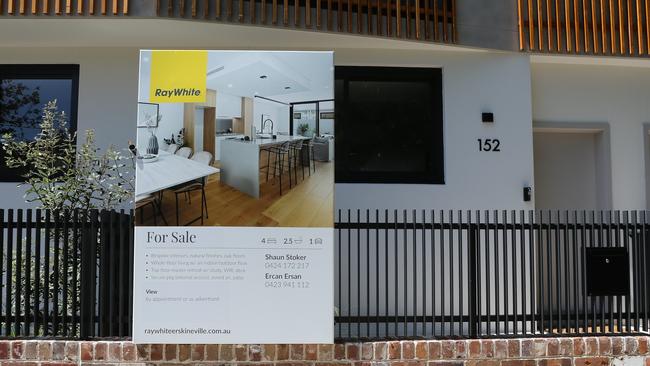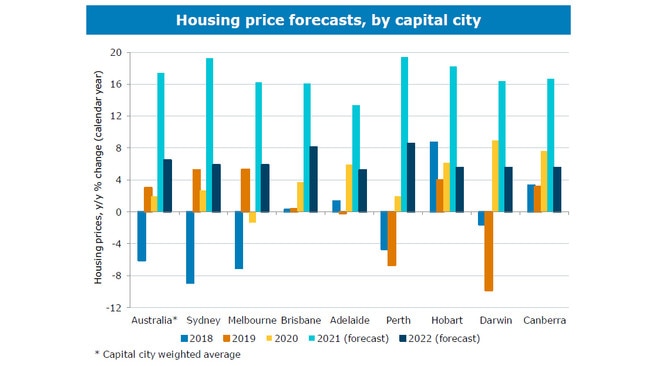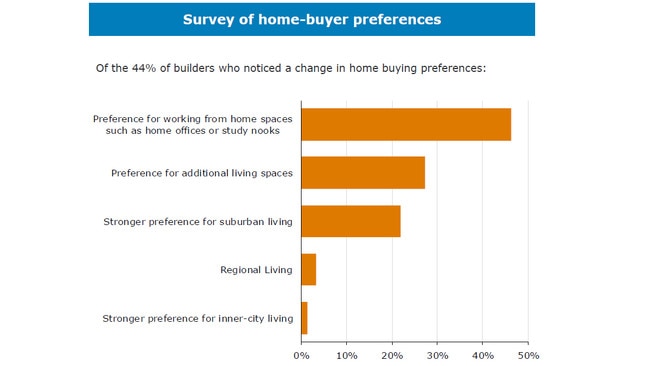Australian house prices to climb 17% in 2021: ANZ
Analysts at a major bank say capital city house prices could jump by 17 per cent in 2021, but there’s one factor that might put the brakes on.

The residential property market frenzy created by buyers who fear they will miss out has caused ANZ to forecast a sharp 17 per cent rise in prices across capital city markets over the course of 2021.
Analysts said the ultra-low lending rates has spiked demand, with fierce competition and FOMO (the fear of missing out) emerging as a result of ultra low prices. This combination had more than offset the headwinds from elevated unemployment and very low population growth as a result of closed international borders.
But, these strong conditions the are expected to soften through the latter half of the year before increases slow to 6 per cent in 2022.

“By June, we expect prices to be rising at a more moderate pace given the end of government programs like JobKeeper and HomeBuilder, and a lift in fixed mortgage rates,” analysts said.
“By year end though, we expect the regulators will step in with macroprudential controls to address the overheating market, with the exact measures likely to be dependent on how the market develops over the next six months or so.”
The bank had previously tipped a rise of 9 per cent over the calendar year but the strong post-COVID recovery, which have already to surpassed falls recorded last year.
Housing finance has risen 76 per cent since the low in May, impacted by the slew of first home buyers that entered the market over the past six months. More than 30 per cent of new loans have been fixed in the past six months. New property listings have begun to pick up but not keep pace with sales, leaving stock levels very as low investors begin to return.

Analysts believe the end of current fixed loan periods start to come off in 2022 and 2023 will act as a handbrake on the market, with lending and interest rate likely to rise before then.
Auction clearance rates – a leading indicator of price growth – are running close to 80 per cent in most capital cities, with households expecting significant price rises.







To join the conversation, please log in. Don't have an account? Register
Join the conversation, you are commenting as Logout